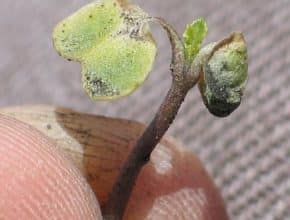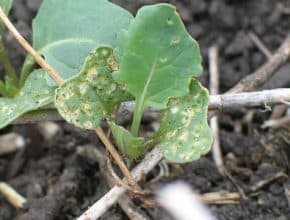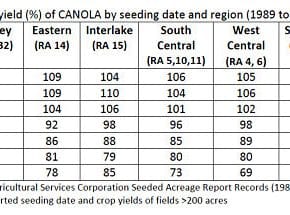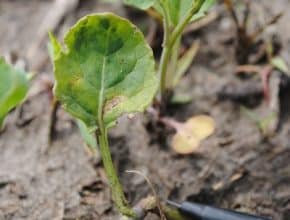Frost hit many areas of the Prairies on repeated nights over the past week. Emerged crop is at risk, especially delicate cotyledons. Wait 3 or 4 days, then look for……
Canola Watch Posts
-
-
Peace (B.C. and Alberta): Canola seeding ranges from half to two thirds complete in the east, to 95% complete in the west. Most areas had some rain in the past……
-
-
Early weed control is the most economical. It reduces weed competition for nutrients and moisture, and improves yield potential for canola. In-crop weed control should occur as early as possible. The following article provides application windows for Clearfield, Roundup Ready and Liberty Link matching herbicides…
-
-
-
If growers have to seed by plane because the field is too wet for a broadcast floater, that means it’s probably also too wet for weed control, fertilizing and harrowing — each important to a profitable broadcast canola crop…
-
If planning a top up fertilizer application, nitrogen must be available before the 5-leaf stage of the crop to provide the largest yield benefit…
-




